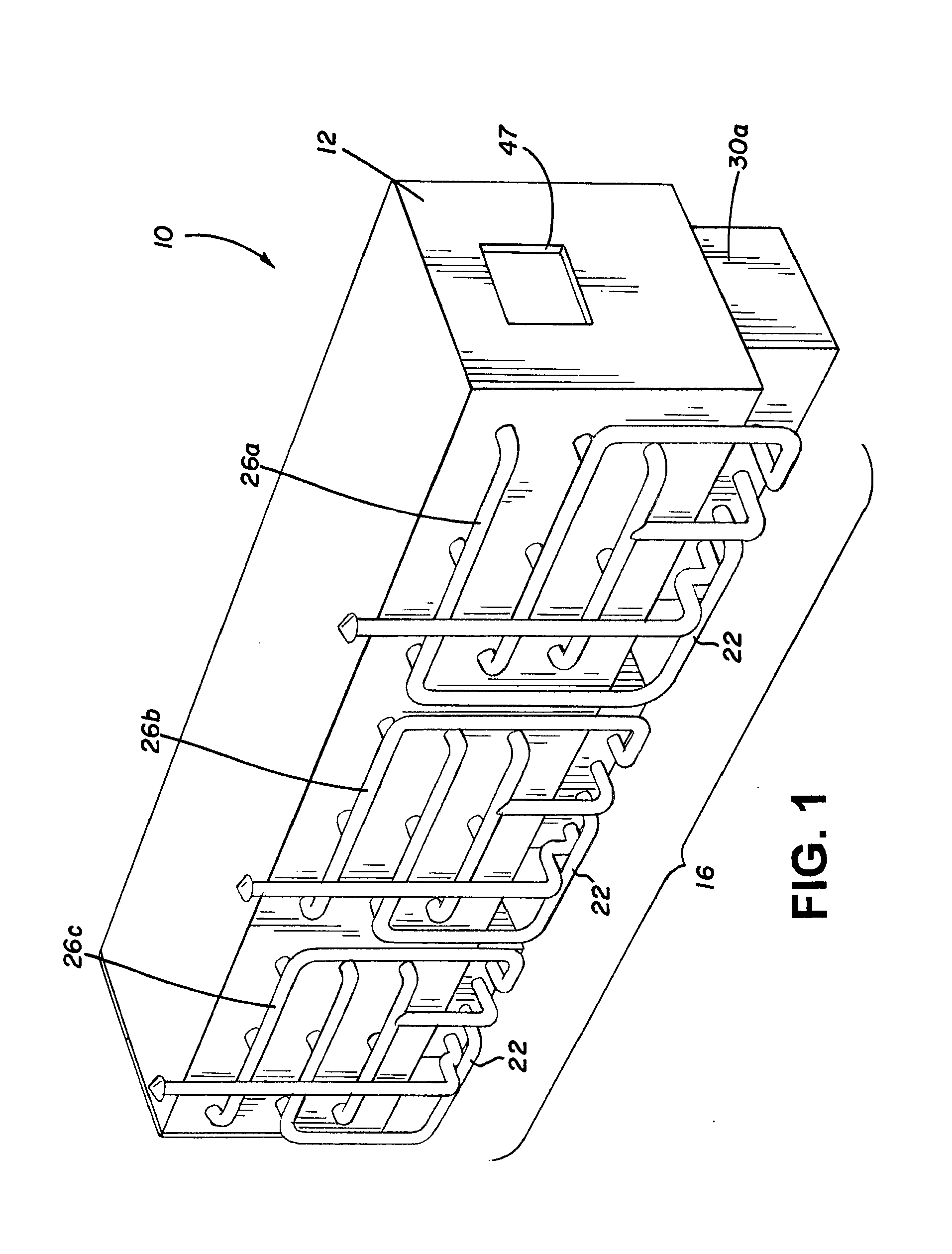Thermal processes of reducing foodborne pathogens in bagged food products
a technology of foodborne pathogens and thermal processes, which is applied in the field of thermal processes of reducing foodborne pathogens in bagged food products, can solve the problems of low moisture food ingredients that do not support the growth of microbial pathogens, foodborne pathogens can still persist for prolonged periods of time, and the potential for microbial growth is reinstated, so as to reduce or eliminate foodborne pathogens presen
- Summary
- Abstract
- Description
- Claims
- Application Information
AI Technical Summary
Benefits of technology
Problems solved by technology
Method used
Image
Examples
Embodiment Construction
[0055]The invention and its various embodiments can now be better understood by turning to the following detailed description wherein illustrated embodiments are described. It is to be expressly understood that the illustrated embodiments are set forth as examples and not by way of limitations on the invention as ultimately defined in the claims.
[0056]Throughout the specification, positional and directional terms below refer to the following:[0057]“North” or “North Wall” shall refer to the side of a heating assembly in which intake vents are located.[0058]“South” or “South Wall” shall refer to the side of a heating assembly in which exhaust vents are located.
[0059]One aspect of the invention provides for a specially made heating assembly designed for reducing foodborne pathogens in bagged food products. In FIG. 1, a preferred embodiment of a heating assembly for reducing foodborne pathogens in bagged food products, or simply heating assembly, is designated generally by the reference...
PUM
| Property | Measurement | Unit |
|---|---|---|
| Temperature | aaaaa | aaaaa |
| Length | aaaaa | aaaaa |
| Electrical resistance | aaaaa | aaaaa |
Abstract
Description
Claims
Application Information
 Login to View More
Login to View More - R&D
- Intellectual Property
- Life Sciences
- Materials
- Tech Scout
- Unparalleled Data Quality
- Higher Quality Content
- 60% Fewer Hallucinations
Browse by: Latest US Patents, China's latest patents, Technical Efficacy Thesaurus, Application Domain, Technology Topic, Popular Technical Reports.
© 2025 PatSnap. All rights reserved.Legal|Privacy policy|Modern Slavery Act Transparency Statement|Sitemap|About US| Contact US: help@patsnap.com



